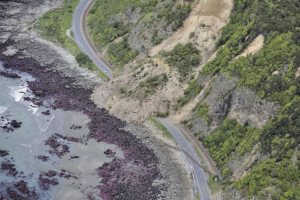Kaikoura Earthquake Recovery Project – Railway Recovery
Remotely located telecommunication towers were also damaged and required repair and replacement in line with the railway line repair programme.
Date: 2017
Client: North Canterbury Transport Infrastructure Recovery (NCTIR)
Project Location: Christchurch and Kaikoura
Services Provided: Design Management, Value and Risk Management, Contract Administration
TEAM Projects was engaged by NCTIR to manage the design and reinstatement of the railway telecommunications, signalling and power network, damaged as a result of the Kaikoura earthquakes in November 2016.
Reinstatement of the networks required a comprehensive investigation and scoping of damaged assets, and a co-ordinated repair programme, integrated with the wider NCTIR recovery programme. Damaged overhead power and telecommunication services were replaced with a new underground ducted system, designed for resilience to safeguard the continued commercial operation of the railway.
Remotely located telecommunication towers were also damaged and required repair and replacement in line with the railway line repair programme.
TEAM also managed the construction and operation of temporary rail crossings along the 60km length of the NCTIR project, to facilitate and maintain both construction activities and public traffic movements.
Lessons to be shared
The scale of the Kaikoura recovery project and the requirement for rapid recovery required a collaborative approach from designers, clients and constructors alike.
Close collaboration and co-operation, and a true “best for project approach”, was required for the sequencing of earthworks, slope stabilisation, telecoms, and structural repairs, to ensure all parties can achieve their objectives.
Working near potentially unstable slopes required the development of innovative working methods to ensure that construction activities can be undertaken efficiently and safely. These included temporary mesh netting, suspended from cranes, as protection, steel cages to protect essential telecommunications equipment and directional drilling to avoid the need for machine and personnel operations at the base of the slopes.


